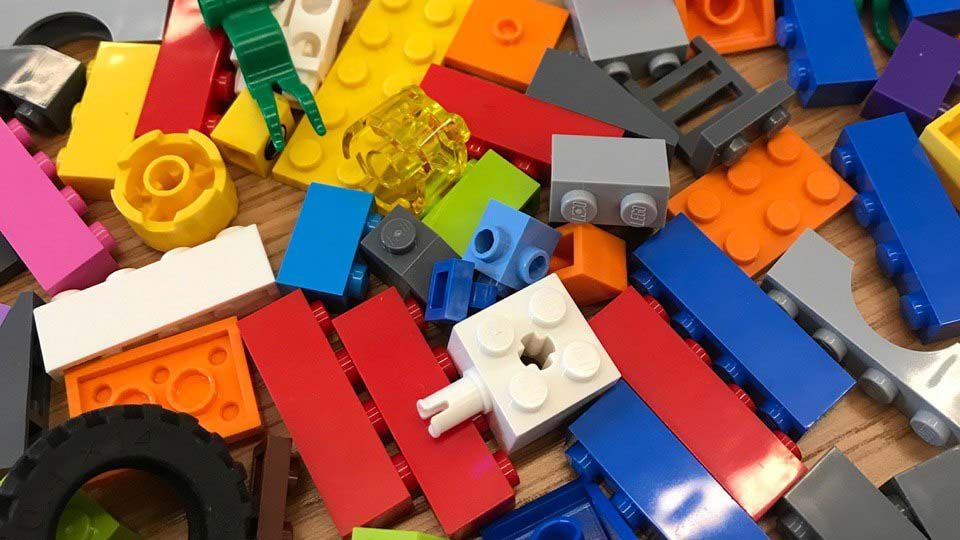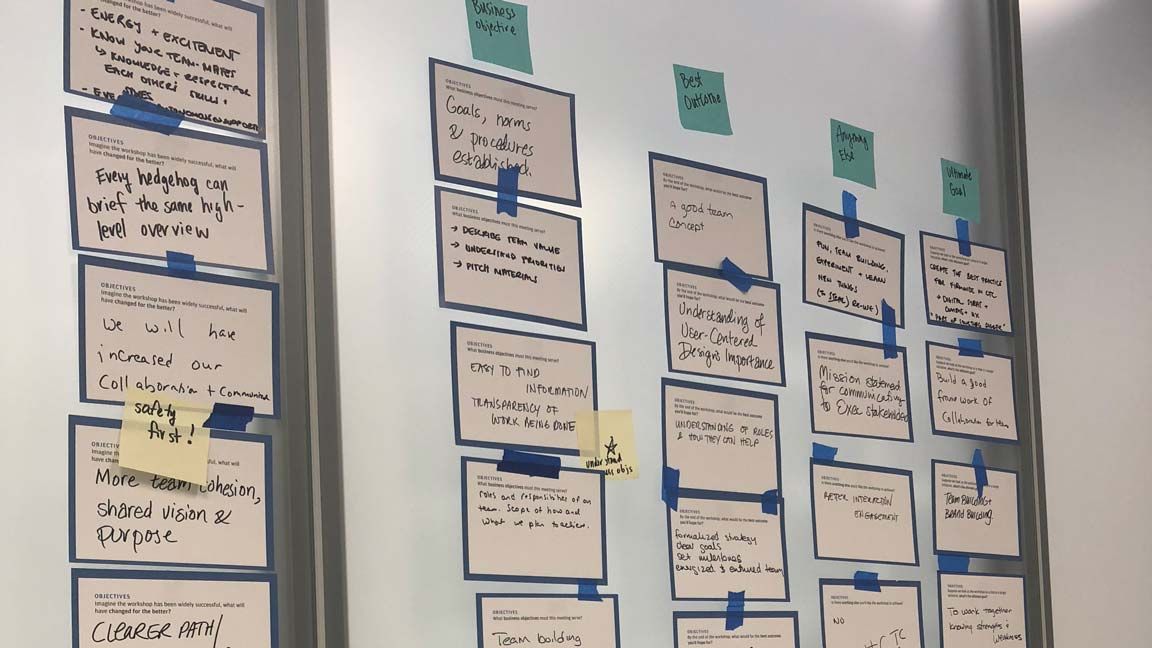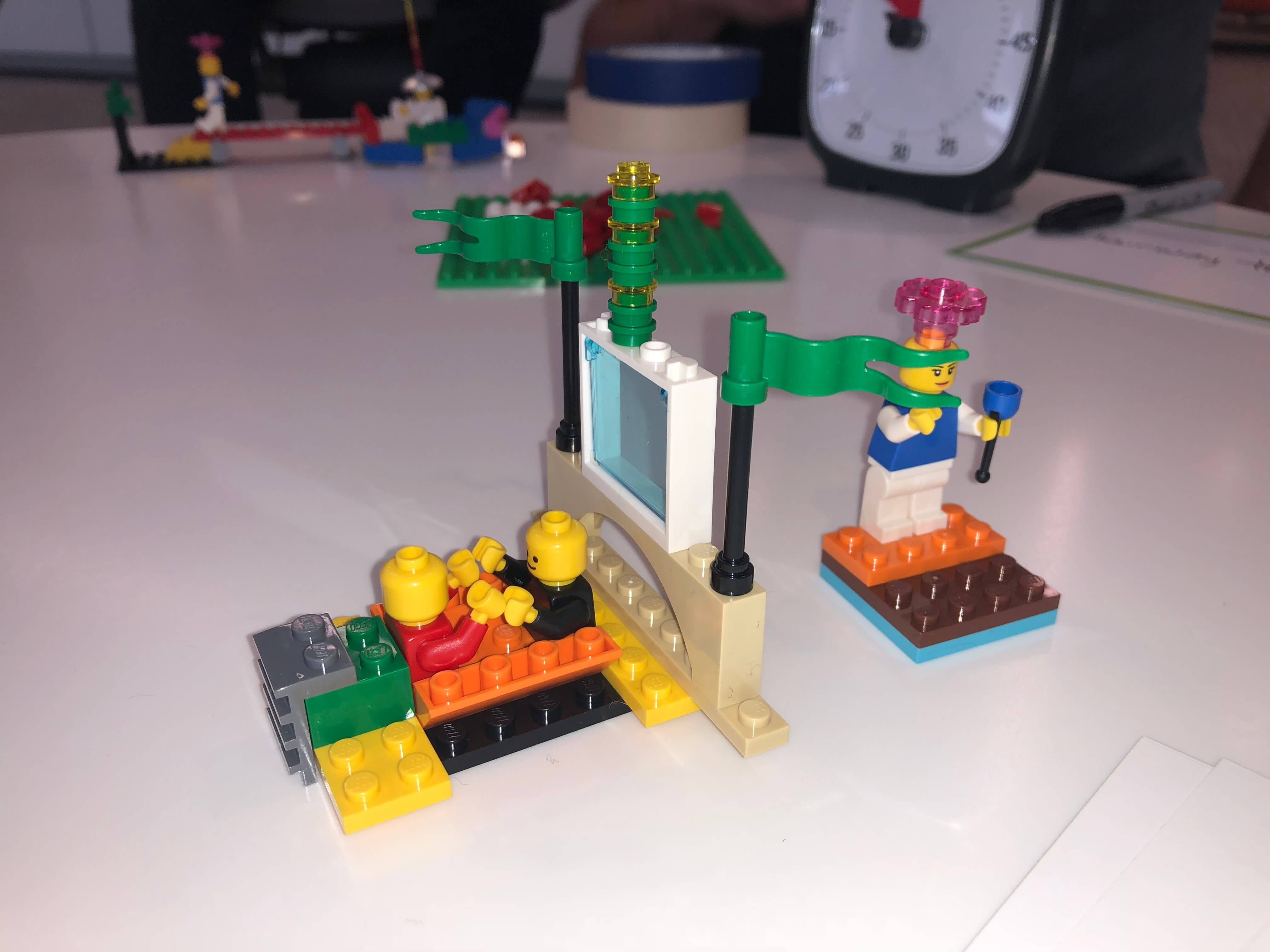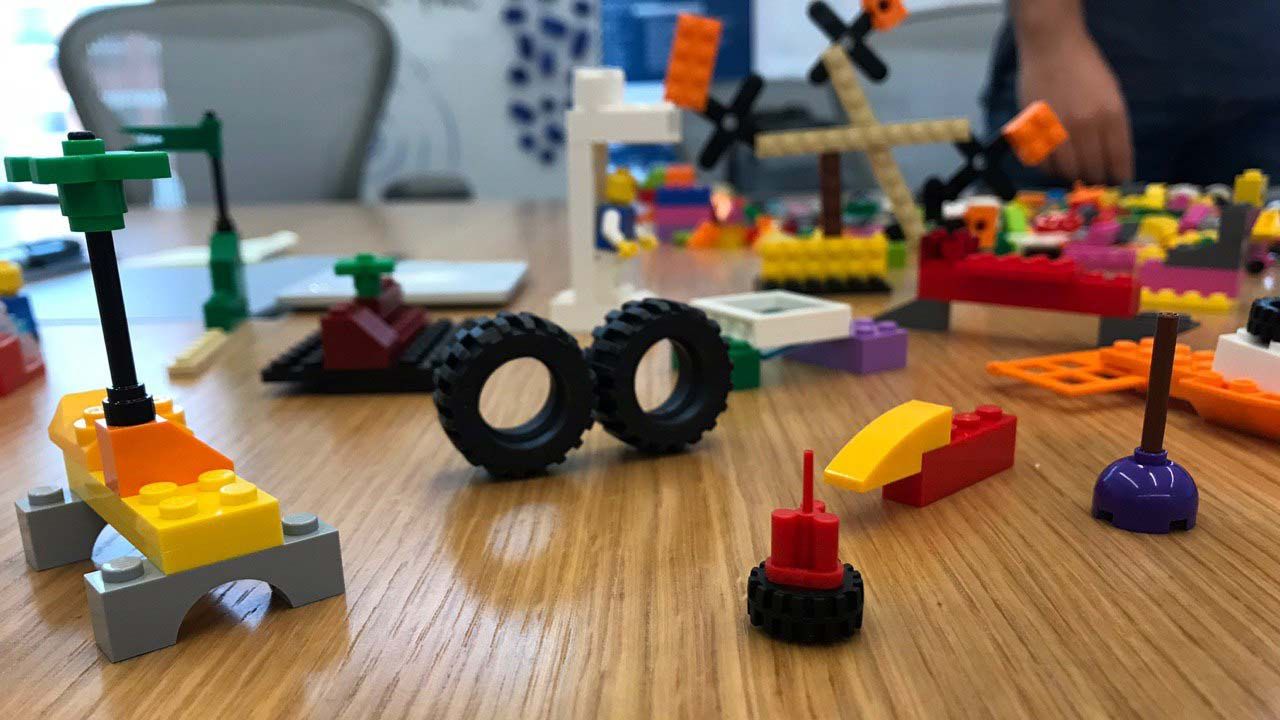Workshop Facilitation
LEGOs® can put corporate colleagues on the therapy couch

In the second half of 2018, my colleagues and I played with LEGO® bricks in a corporate setting for a total of 16 hours. Many were open to the idea because they thought it would be fun and make for good team building. What they did not expect was to come out of the sessions with a team vision, mission statements, and new product ideas.
Through this process I got to see my colleagues and friends really open up about their motivations and goals. #
It was September 2018, and we had a 2-day onsite [1] on the calendar. My boss had purchased a book, LEGO® Seriousplay® (LSP), but didn't have time to read it. She asked if we could facilitate one of these sessions ourselves in under a week, and we agreed. I practiced with co-workers after hours and with a friend on the weekend. What I learned right away is that the process really opens up participants. They will tell intimate stories and offer personal feelings. One participant even remarked that they felt like they were on the therapy couch.
I quickly discovered that this kind of sharing could be a great way to connect with colleagues, but I decided to use sets of questions and challenges prescribed by the book that were less personal in the actual sessions. For example, we used "difficult/nightmare client" instead of "personal/professional goals," and "dream vacation" instead of "build myself."
Whatever the questions and challenges, these builds end up being very memorable. I'm always surprised by how fast participants get into the flow of using the legos to tell stories and explore concepts. #

One stand-out element of LSP is the grid cards. We made special prints with full-bleed colored edges, which is nice but not necessary. Objectives were blue, Vision Statement and News Headlines were green, and for other categories we had black gridcards and Post-it® notes. These cards, particularly the blue objective cards and the exercise called "5 questions," set up the whole workshop and help folks determine what observations, reflections, and ideas best align with their goals and objectives.
These cards have proved so productive that we have started using them in all types of meetings, such as Lean UX [2] problem statement workshops, persona validation exercises, and customer journey mapping, just to name a few. I would say that the 5 questions objective setting session gives professionalism and structure to the whole process, keeping those less-open-minded participants on track and engaged.

There are 3 LSP skills and 4 fundamentals that a facilitator must instill in the workshop. Even if participants have done LSP before, it is important to review this etiquette.
Skills #
- Technical - being physically comfortable manipulating the bricks
- Metaphor - assigning meaning to every brick in the models
- Storytelling - telling the story of the model from beginning to end
Fundamentals #
- Enable the 3 modes of communication - Basically these are steps 2-4 of this list. These modes are frequently called Interpersonal, Interpretive, and Presentational. Speakers can communicate more fully and uncover unexpected parts of their ideas. They do this by articulating the models and describing them from different perspectives.
- Telling the story of the model - Everyone is curious about each other’s models and what they mean. This fosters shared understanding. Storytelling is a sought-after proficiency in the business world, LSP makes it accessible.
- Establishing "listening with the eyes" as the norm - All the room’s eyeballs are on the models. Even speakers are encouraged to not make any eye contact. Speakers report being more heard by their colleagues.
- Encouraging curiosity about the models - Participants don’t assign meaning to each other’s models. Instead they interrogate deeper levels of meaning, asking what specific bricks signify and what relationship the bricks have to each other.

A really well facilitated LSP workshop will seem effortless to the participants. The SERIOUSPLAY® method and materials make for an engaging workshop. Instructional sites out there recommend working with trained facilitators but I think careful preparation and practice can result in a great workshop yourself. Remember to carefully craft questions and always emphasize the LSP etiquette.
The builds last between 30 seconds to 5 minutes and go really well when upbeat music is playing. I did not want to be responsible for the playlist choices during a 4 hour plus workshop, so we found a Spotify playlist with a prescribed set of in-offensive and upbeat music with just enough personality to inspire the builds. Providing for-warning that the playlist was pre-selected by LSP professionals stops most discussion about the music choices.
For further information: #
https://www.lego.com/hu-hu/seriousplay
Footnotes: #
[1]: An onsite as apposed to an offsite is similar in that it is full days of strategy and team activities, but in this case it is just held in a corporate conference room. The advantage is that it is easy to coordinate. The dissadvantage is that participants are more likely to be distracted or take the session less seriously.
[2]: Lean UX Book, by Jeff Gothelf
[3]: The typeface choices in this book are terrible; an offense for which I would normally dismiss a book. But this time the content was so good I was willing to look past it. An easy solution for this offense would be to keep the distinctive tyeface for headings and choose a more legible example for body copy.
Read more posts
- Previous:
 Instagramallation
Instagramallation - Next:
 Podcasts
Podcasts